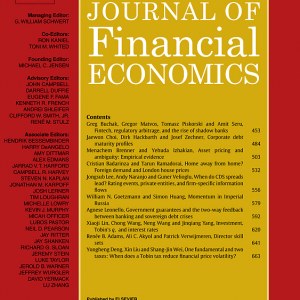
Berglof, E. and Perotti, E. (1994). The governance structure of the Japanese financial keiretsu Journal of Financial Economics, 36(2):259--284.
-
Affiliated author
-
Publication year1994
-
JournalJournal of Financial Economics
The authors rationalize the cross-holdings of debt and equity within the Japanese keiretsu as a contingent governance mechanism through which internal discipline is sustained over time. The reciprocal allocation of control rights supports cooperation and mutual monitoring among managers through a coalition-enforced threat of removal from control. In financial distress this threat is less effective, and the governance mode shifts to hierarchical enforcement under main bank leadership. The model is consistent with the capital structure, the distribution of claims, the extent of intragroup trading, and patterns of investor intervention within the groups.